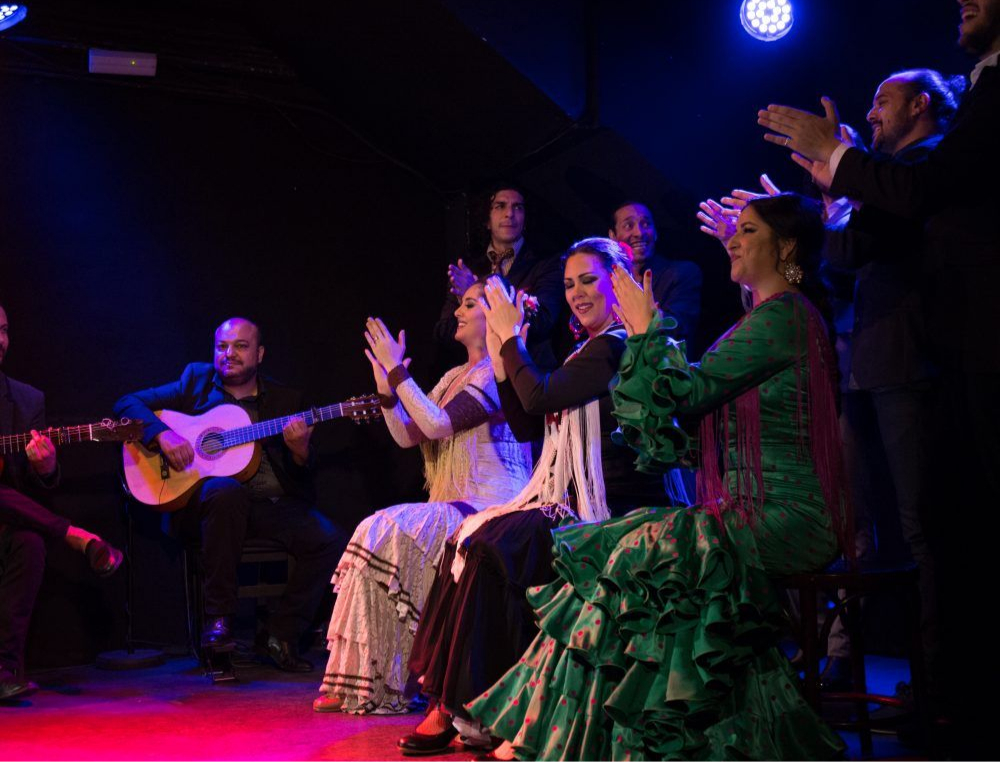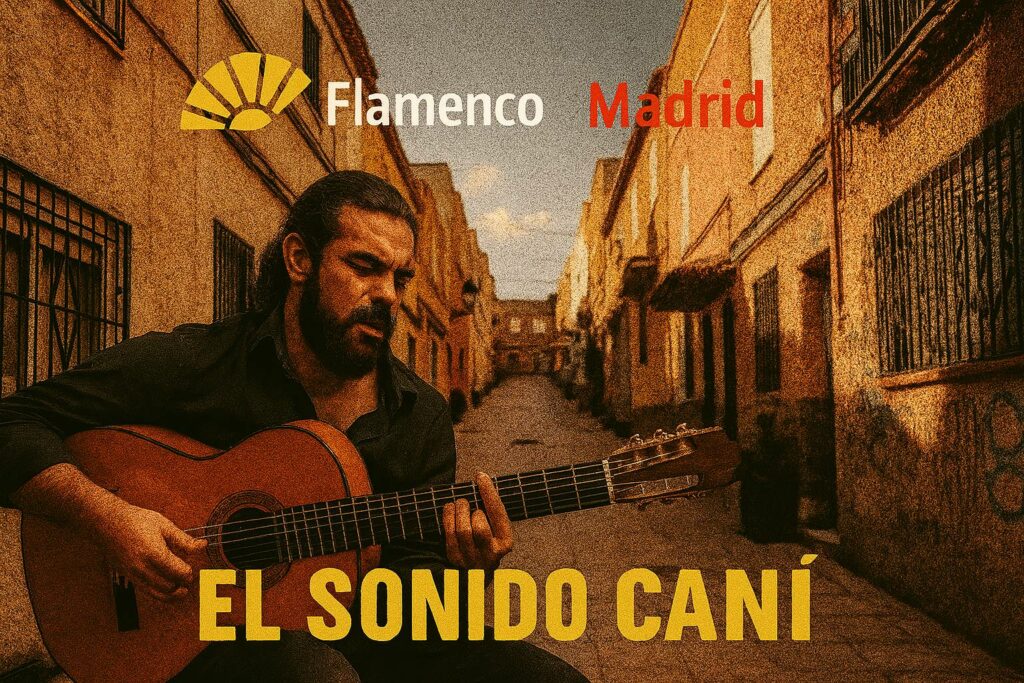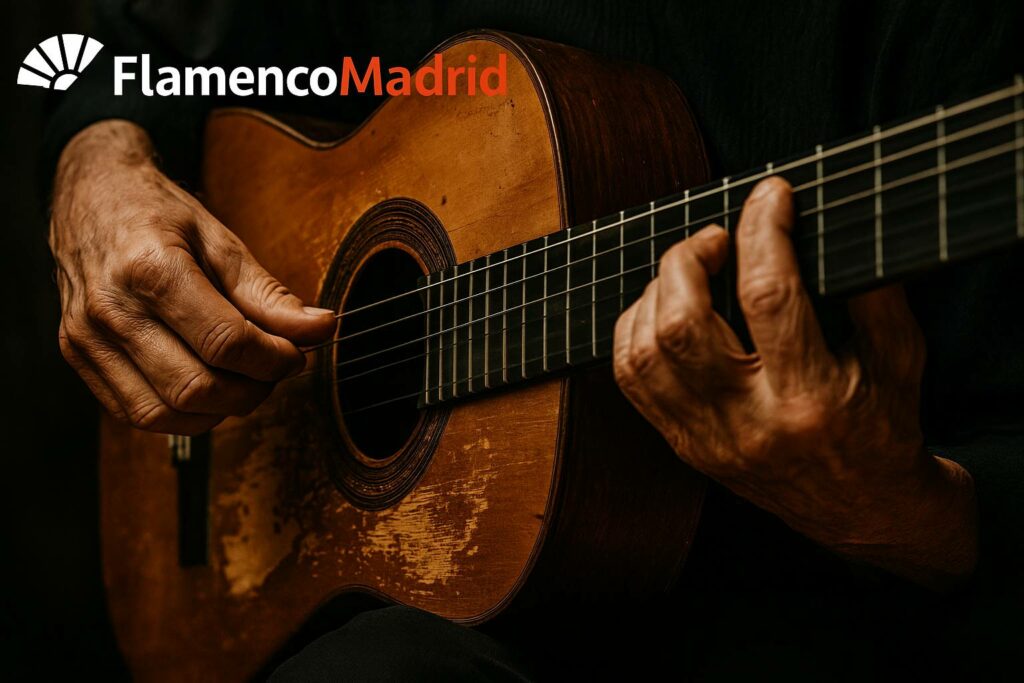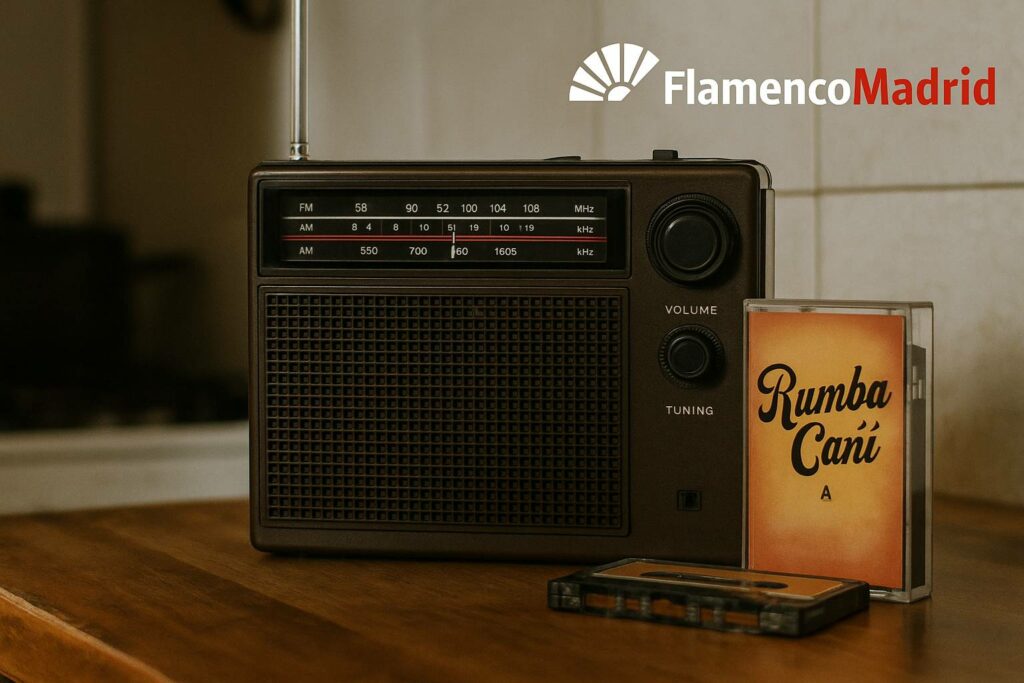

Curiosidades Flamencas
The Cañí Sound
There are words in flamenco that feel more like a jolt than a definition. You won’t find them in a dictionary — you feel them in your chest. We’re talking about duende, about pellizco… and in Madrid, above all, we talk about cañí. But don’t let its simplicity fool you: this word is much more than a synonym for “gypsy.”
It’s not just a word — it’s a whole world. A way of making flamenco that comes from deep inside, unfiltered, sometimes broken, but always honest. Today we dive into the sound that beats beneath the asphalt of the capital.
The Aesthetic of the Authentic: What Is the Cañí Sound?
Forget perfect technique for a second. The cañí sound is about something else: emotional truth. If academic flamenco is a perfectly painted portrait, cañí is the raw brushstroke — messy, but full of feeling. It’s bare art, nothing superfluous.
You hear it in the afillá voice, that raspy tone that seems to tear with every lament. You feel it in the guitar’s soniquete — that groove that makes you move — and in the punch of the alzapúa, a sound that’s part party, part battle. In short: it’s brutal honesty turned music.

The Birthplace of the Toque: Where an Unmistakable Style Was Born
This sound wasn’t born in a theater. It was born in the street. To be exact, in Madrid’s working-class neighborhoods, which in the 1950s and 60s became the flamenco laboratory. Conditions were tough, but talent overflowed.
It was there that whole families — like the Habichuela — found their place. Though originally from Granada, their guitar playing absorbed Madrid’s flavor here. Masters like the great Pepe Habichuela, alongside legends like El Nani and El Viejín, shaped a style that was instantly recognizable. It’s not just legend: the famous “Caño Roto sound” is a true musical denomination of origin.
From Tablao to the Charts: The Evolution of a Feeling
A sound this powerful couldn’t stay in one neighborhood. In the 70s and 80s, it exploded and hit the airwaves across Spain. Streetwise, electric rumba became the soundtrack of a generation with stories to tell.
Groups like Los Chichos and Los Chunguitos gave voice to street life with raw authenticity. But it was perhaps Las Grecas who nailed it: they mixed cañí rage with rock guitars and created anthems like “Te estoy amando locamente”. It was pure flamenco — and all of Spain understood it.

The Echo of the Cañí Sound in Today’s Madrid
In the end, that’s the lesson of the cañí sound: the deepest art comes from truth, not perfection. And that root, planted decades ago in Madrid’s barrios, still bears fruit today.
That same pursuit of raw emotion is what defines the experience in the best tablaos. You’ll find it in the power of a bailaor in a cutting-edge venue like the ones we recommend at FlamencoMadrid.
Because flamenco, in the end, always returns to the same place: that pellizco, that visceral truth that reminds us this art is not performed — it’s lived.

The best 6 Flamenco shows in Madrid
Meet with the majesty of flamenco and its contention in the tablaos of the capital of Spain.
See shows in Madrid